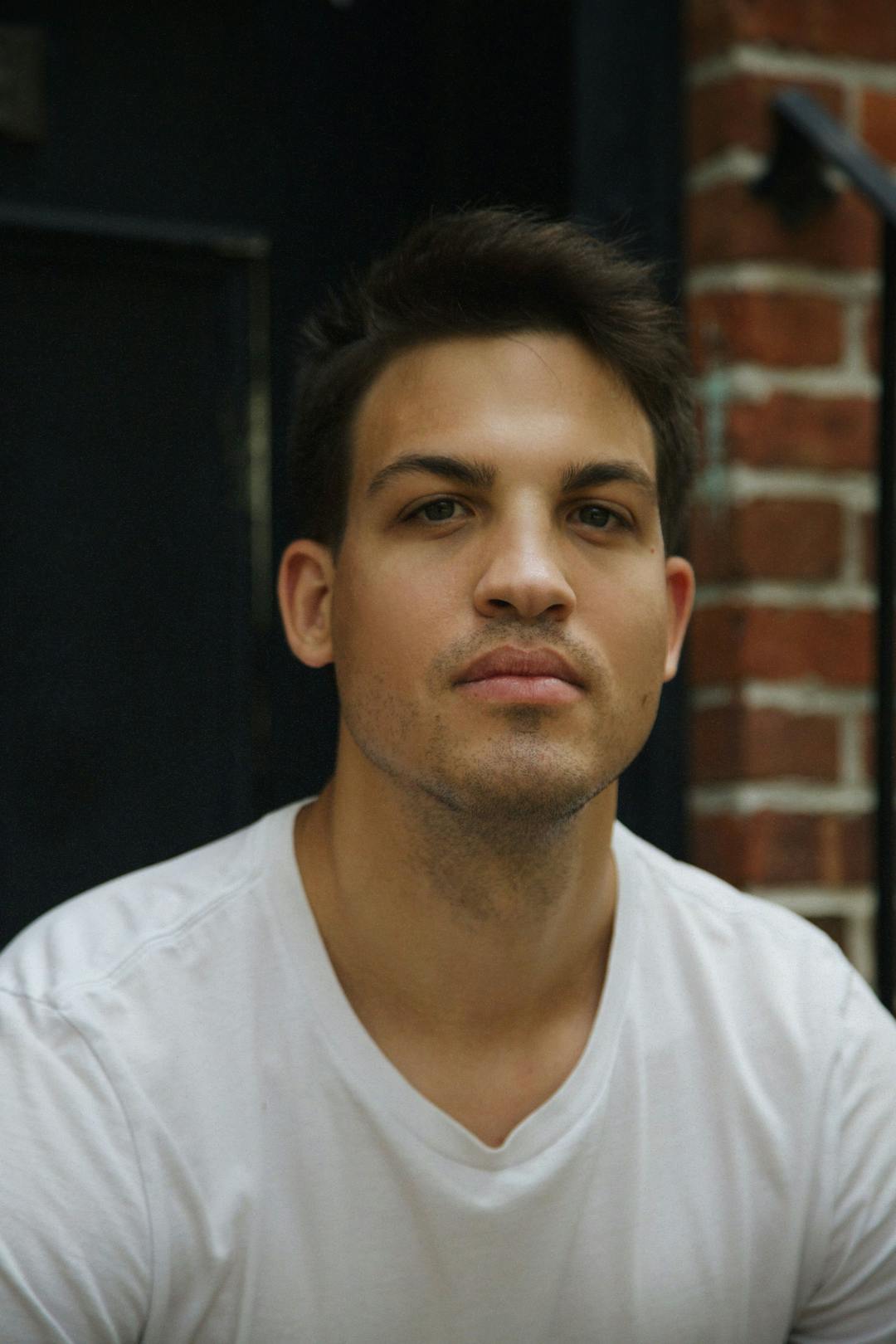
Melissa Burch
NYC Economic Development Corporation
As a renowned leader in urban development, Melissa Burch has achieved remarkable milestones in the world of commercial real estate. Now, she is leveraging years of private sector leadership in her new role as the Chief Operating Office of the New York City Economic Development Corporation.
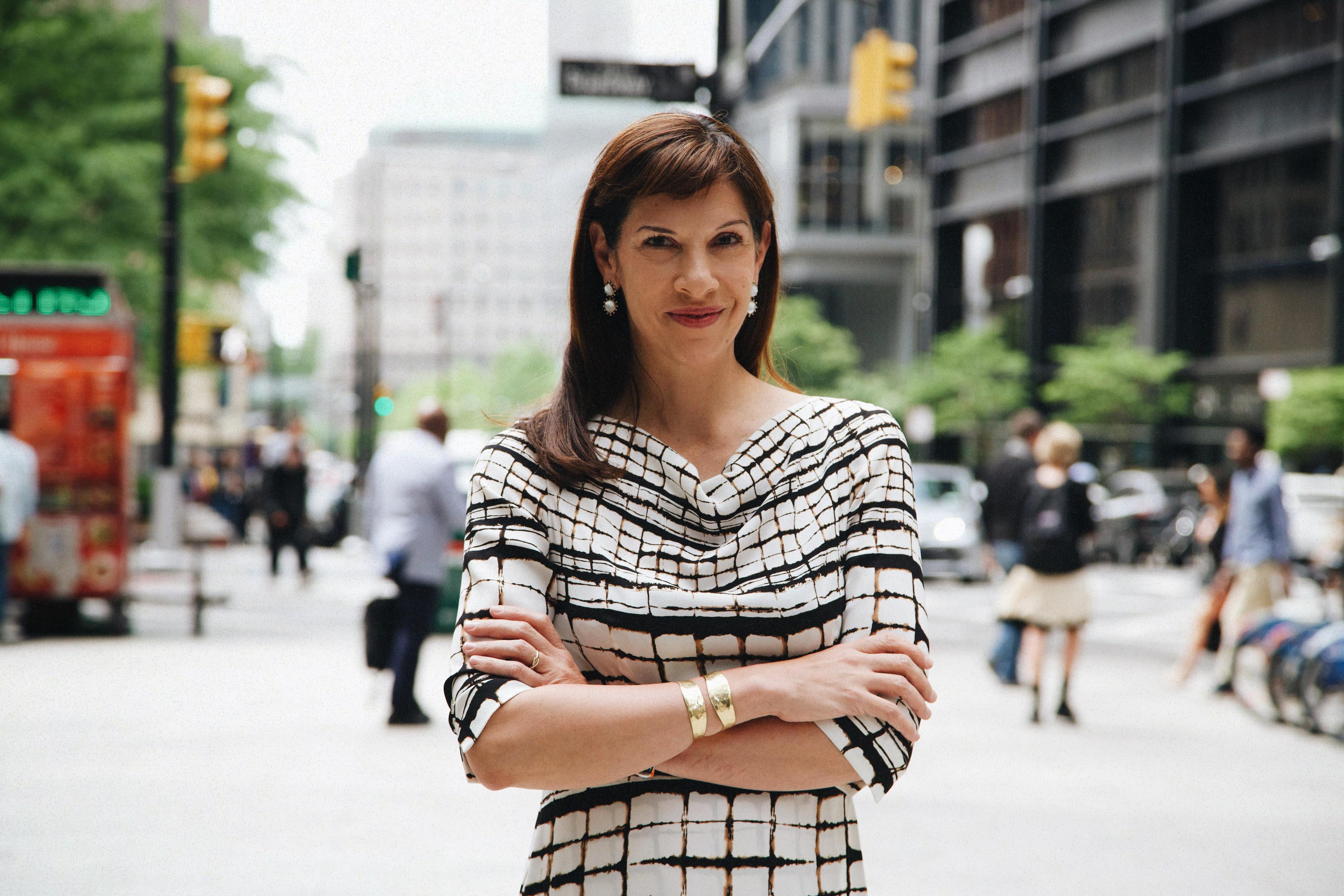
By Eva Sergeeva for Commonplace
Can you give a brief overview of your work and what you do?
Absolutely. The New York City Economic Development Corporation (NYCEDC) stands at the intersection of NYC business and government. We are a 501(c)(3) and Public Benefit Corporation with responsibility for redeveloping underutilized city-owned land into assets that improve neighborhoods, deliver new tax revenue, and create quality jobs in growing sectors. We are also charged with making investments with City capital in smart and strategic ways that attract new businesses and industries to NYC and spur private investment to create a vibrant, inclusive and globally competitive economy.
As the Chief Operating Officer for the NYCEDC, I'm honored to be working with Mayor Adams’ Administration, Deputy Mayor Maria Torres-Springer, President Andrew Kimball and the leadership team at the NYCEDC to drive this transformation. A shout out to the entire NYCEDC team, which is 500 plus people strong, and brimming with creative thinkers and changemakers who know how to translate ideas into action and deliver results.
I joined the NYCEDC following a 25-year career in the private sector leading the development, construction, and financing of transformative projects across New York. As Chief Operating Officer, I have responsibility for developing and managing our real estate assets, negotiating economic development transactions, and utilizing our incentives and financing portfolios to spur private investment. Even though I’m relatively new to the public sector, I’ve been a civic developer for decades.
"I have always been drawn to solving big problems through public-private partnerships - like how to fortify, diversify, and grow New York City's tax base. Or, how can we better deliver on the challenge of creating more affordable housing? These civic quests have sustained me for a whole career, and I am deeply engaged in them through my work at the Economic Development Corporation."
What path led you to this work?
I may be an Ohioan by birth and a Latina by heritage, but I set my sights early on NYC. As a young teen living in Columbus, OH, when asked what I wanted to be when I grew up, I replied “A New Yorker.” New York was then, and remains, my city of dreams.
After studying Government at Harvard, I like to say I earned a second college degree in corporate finance at Merrill Lynch. Merrill’s investment banking analyst program was fantastic, and it taught me the language and skillset of finance and provided me with a foundation in financial markets, business strategy and capital flows. This was my springboard into a career learning the art and science of capital markets and dealmaking, how to create shareholder value and unlock new business opportunities.
While getting my MBA, I sought to merge my interests in business and government and, through that process, I stumbled upon real estate development as a profession. A cold call to Bruce Ratner landed me a summer internship in Development at Forest City. Senior leaders like MaryAnne Gilmartin, Jane Marshall, Joanne Minieri, Laurie Golub and Andy Zlotnick gave me the encouragement and runway to stay and grow with the Company for 13 years. First, learning development building by building, and then ultimately leading the entire commercial and residential development portfolio as the Executive Vice President in charge of transformational projects like the Barclays Center, Atlantic Yards, CornellTech and MetroTech.
It was an epic opportunity to grow up in the development business helping spearhead a mega project like Atlantic Yards. The tenacity, vision, drive and creativity to imagine and then actually create a 20,000 seat arena, new parks, affordable and market rate housing and improvements in rail and subway infrastructure is extraordinary and made possible with dedicated joint public and private sector leadership, commitment and problem solving. It is the ultimate economic development project.

Barclays Center was a key component in the transformative Atlantic Yards megaproject
Courtesy of the Atlantic Yards Development Corporation
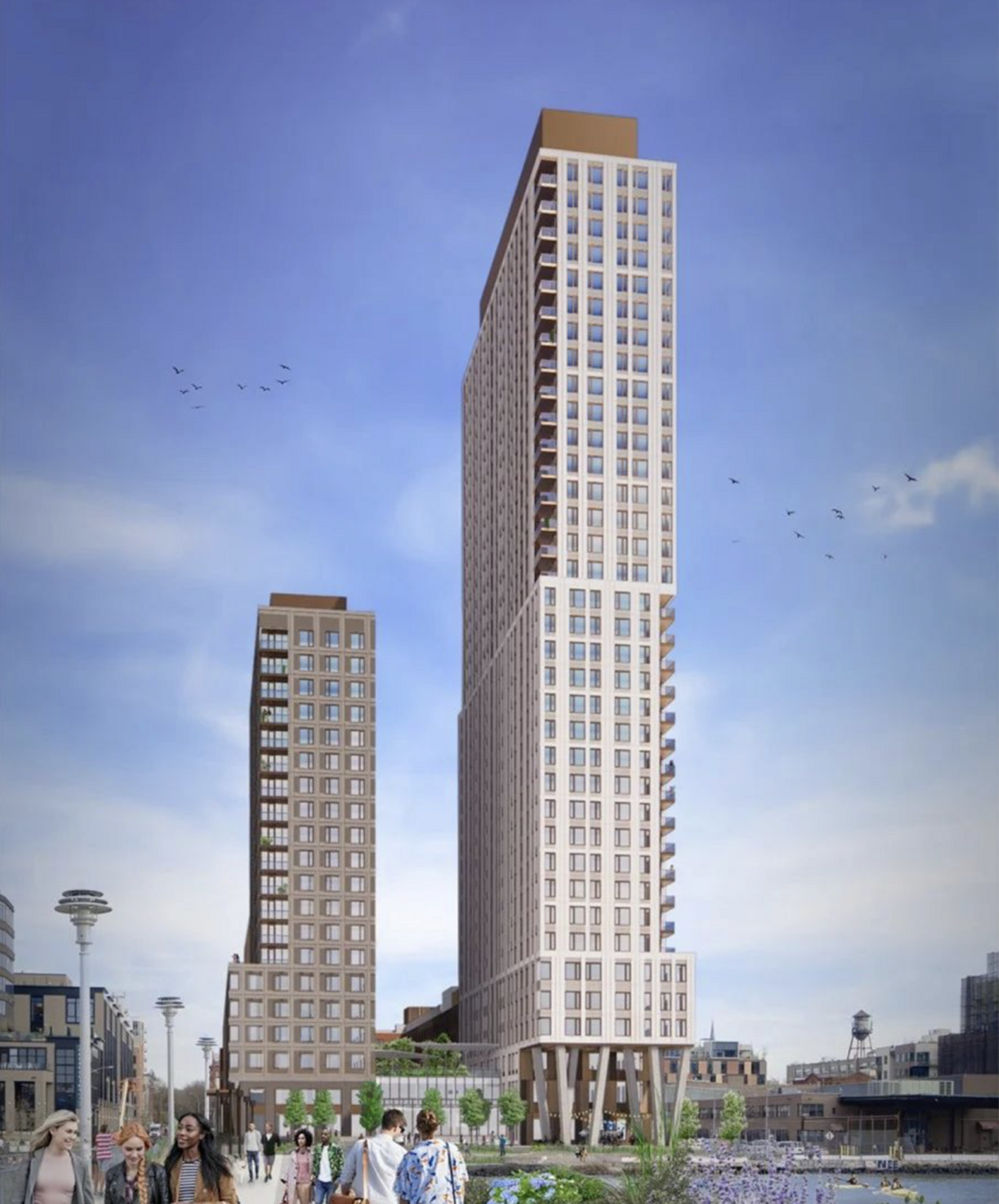
A rendering of 1 Java
Designed by Marvel Architects
Are there other projects you have worked on prior to EDC that you are particularly proud of?
For sure, there are several. I’ll highlight one from my time at Lendlease. To back up for a moment, in 2015, I was tapped by Australian-based Lendlease to help lead their entry into the US market and head the creation of a development and investment business in New York. Lendlease is a giant and ambitious firm with a global footprint and track-record of imagining and delivering large scale urban regeneration projects spanning over a dozen cities globally. I’m particularly proud of the 1 Java acquisition and development I led on behalf of the firm. For starters, we acquired the site in October 2020. If you can remember, this was in the depths of COVID, when the headlines were all about people fleeing the City. I’m proud we had the conviction and the capital to execute on a huge full city block land purchase and invest in New York’s future.
The 1 Java development is now fully designed and under construction, spans a full city block and is located on the waterfront in Greenpoint, Brooklyn. The former single-story underutilized warehouse was demolished, the soil remediated, and the site is now being transformed into a new waterfront park and 850 units of housing, of which 30% will be affordable units.
The building is also an environmental trailblazer in NYC. Not only will it be a 100% electric building, but it is also the largest geothermal residential installation in North America. The geothermal system operates under the building footprint through an integrated system of 300 vertical boreholes that reach 500 feet deep. The building will heat and cool water using thermal energy instead of oil or natural gas, it will also dramatically reduce the cost of the electric bill and is expected to achieve 50% less carbon emissions than if it were designed with a conventional natural gas boiler system. I learned so much about decarbonization and sustainability at Lendlease. As a 1.5 degree-aligned firm, Lendlease is deeply committed to environmental leadership and innovation. My seven years there really unlocked my deep interest in green energy and the need to walk the walk on investing in decarbonization measures to move the market .
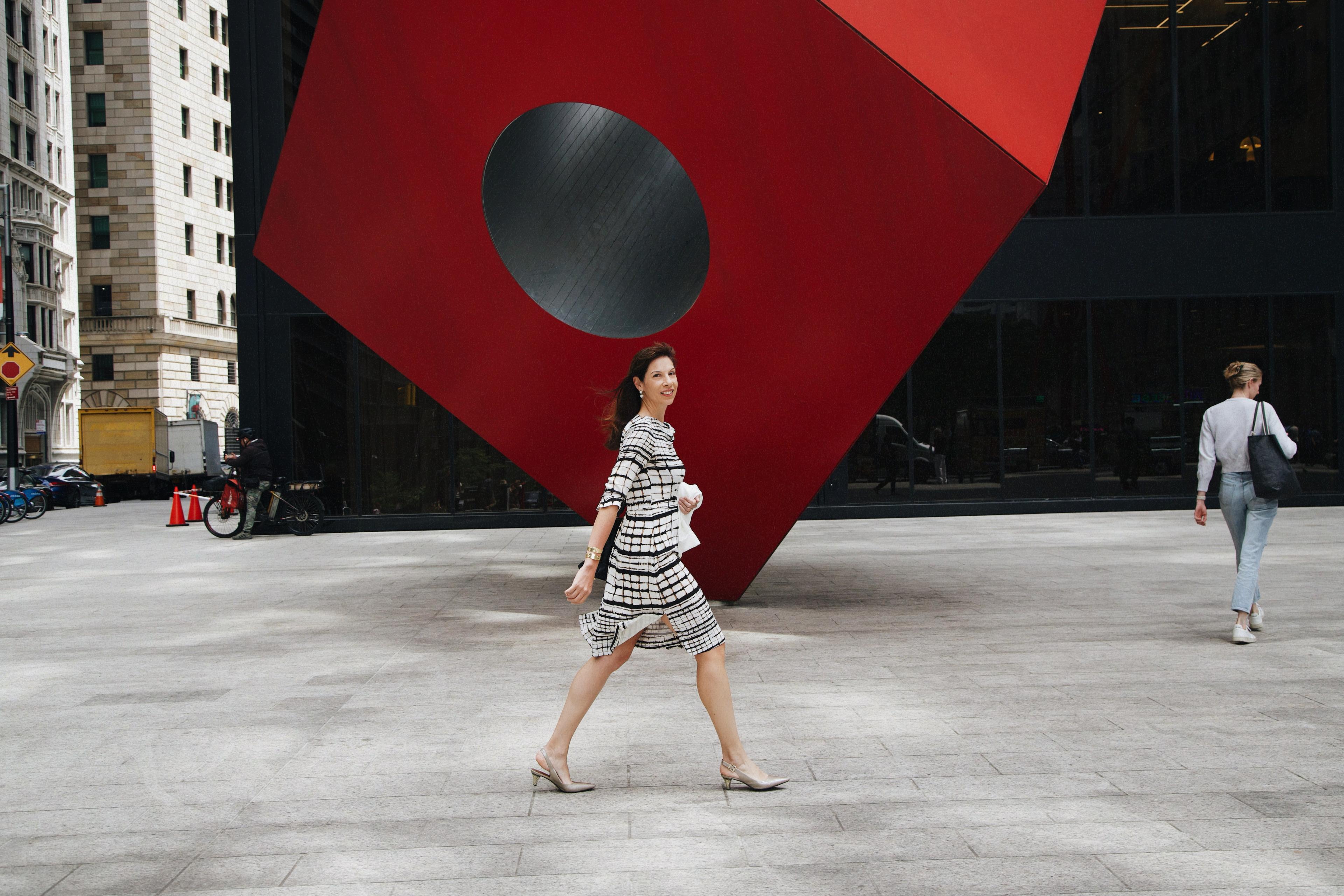
By Eva Sergeeva for Commonplace
For our readers who may not be familiar with NYCEDC, can you talk a little about the organization and what it does?
Sure – the NYCEDC is the economic development arm of New York City, which primarily involves growing the innovation economy, creating quality jobs and developing business confidence in the city. We carefully monitor the economic health of the City and publish these indicators in a monthly dashboard that measures our progress in areas we believe contribute to making New York the premier city for business and innovation. You can get this sent straight to your inbox every month by signing up at edc.nyc.
Functionally, while we have strong connectivity with City Hall and government agencies, we are a stand-alone public benefit corporation governed by a board of directors. We are also self-funded, meaning we don’t depend on tax levy to operate – the net operating income of our managed real estate portfolio is largely what funds our operations. We are a double bottom line organization, so our goal is to deliver both financial returns and measured social impact through our prudent management of City assets. This means we need to be prudent business operators as well as take a holistic approach to creating a resilience and inclusive city.
I describe the EDC as NYC’s largest and most consequential impact real estate developer and manager. Our scale is significant. We manage approximately 64 million square feet across 230 assets on NYC-owned land. These assets do not house government agencies. The assets are critical infrastructure or excess land – land that, with creative ground leasing, partnership and redevelopment, can be transformed into productive assets that contribute to the tax base, add to the vitality of neighborhoods, and create jobs.
You may be familiar with NYC’s cruise business, which serves the 1.1 million annual passengers that flow through our Manhattan and Brooklyn Cruise Terminals. Or the Brooklyn Army Terminal and Made in New York waterfront campuses in Sunset Park Brooklyn. Or the famed Coney Island Amusements district. Or the produce, fish, and meat distribution center in Hunts Point that handles over 30% of NYC’s daily food supply. These are all NYCEDC assets and NYC economic generators that our people lead, manage, guide, and nurture.
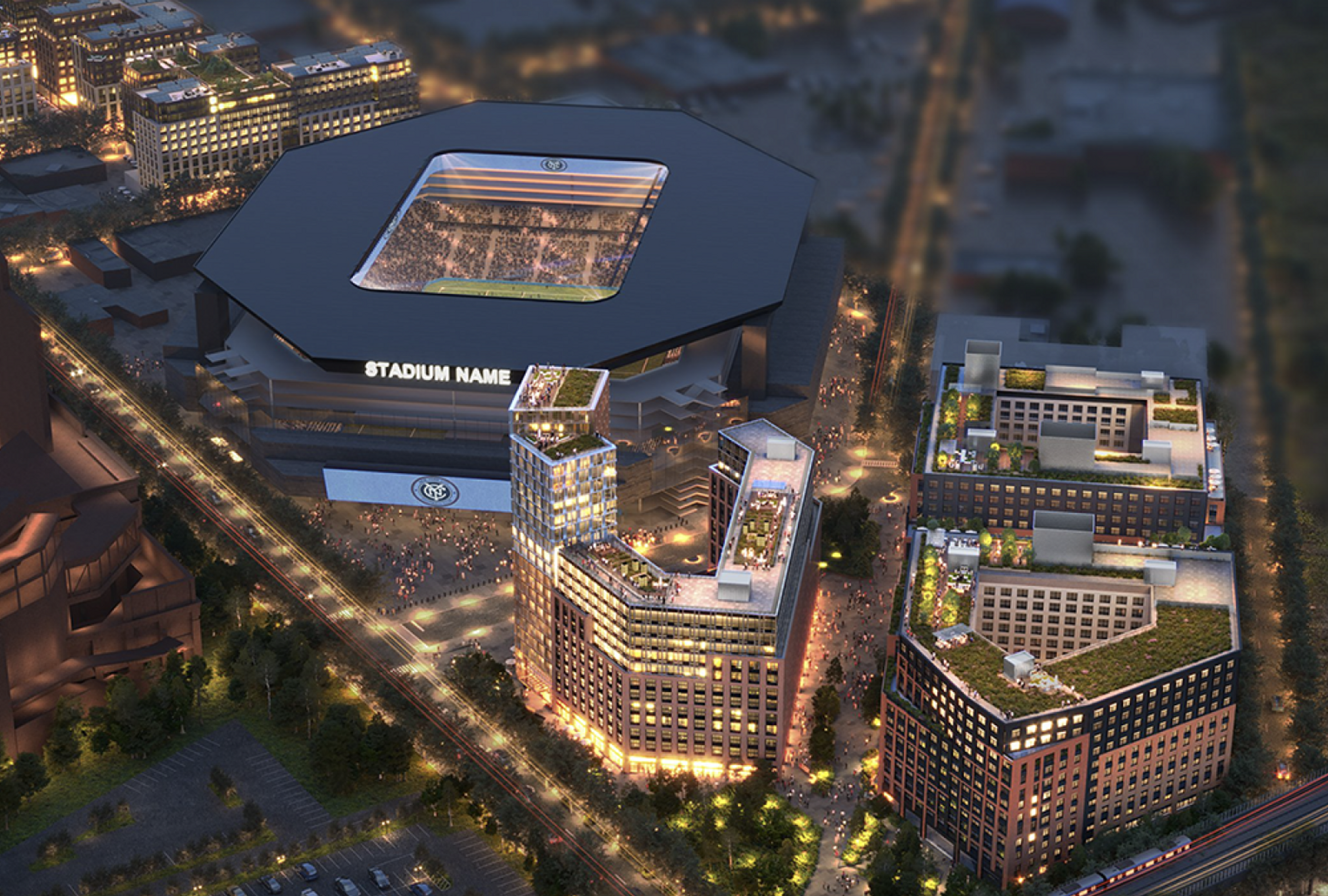
A rendering of Willets Point
Courtesy of NYCEDC

The atrium at the Brooklyn Army Terminal
Courtesy of NYCEDC
How, specifically, does the EDC carry out its mission?
We have a broad mandate. EDC’s operations touch all 5 boroughs and many different neighborhoods. We are adept at securing city, state, and federal dollars that we invest alongside private sector capital into underutilized assets and development sites to create new buildings, campuses, and neighborhoods. Recent NYCEDC examples of this work in action include the creation of the Made in NY Campus in Sunset Park Brooklyn, the redevelopment of the Hunts Point Produce Market, the SPARC life sciences campus in Kips Bay Manhattan, and Willets Point, which will bring NYC’s first soccer stadium and thousands of units of affordable housing to Queens. With these transformational projects, we turn city land and assets into catalytic investments that create good jobs, bring investment into local communities, and grow the economy.
In addition to creating these campuses and hubs, we also look to populate them with high-growth, high-wage industries that will propel New York's economy into the future; these include industries like advanced manufacturing, life sciences, offshore wind, and entertainment and media to name just a few. Further downstream, we also collaborate with the NYC Department of Education and the City University of New York (CUNY) to train and prepare workers for the jobs being created in the sectors we are incubating.
"Whether it is a space lease or a ground lease, we seek to secure commitments on job creation, funding for internships or workforce training programs, and alignment on M/WBE goals. At the end of the day, it's not just about collecting rent; it's about creating partnerships with our tenants to support the growth of people, places and new industries."
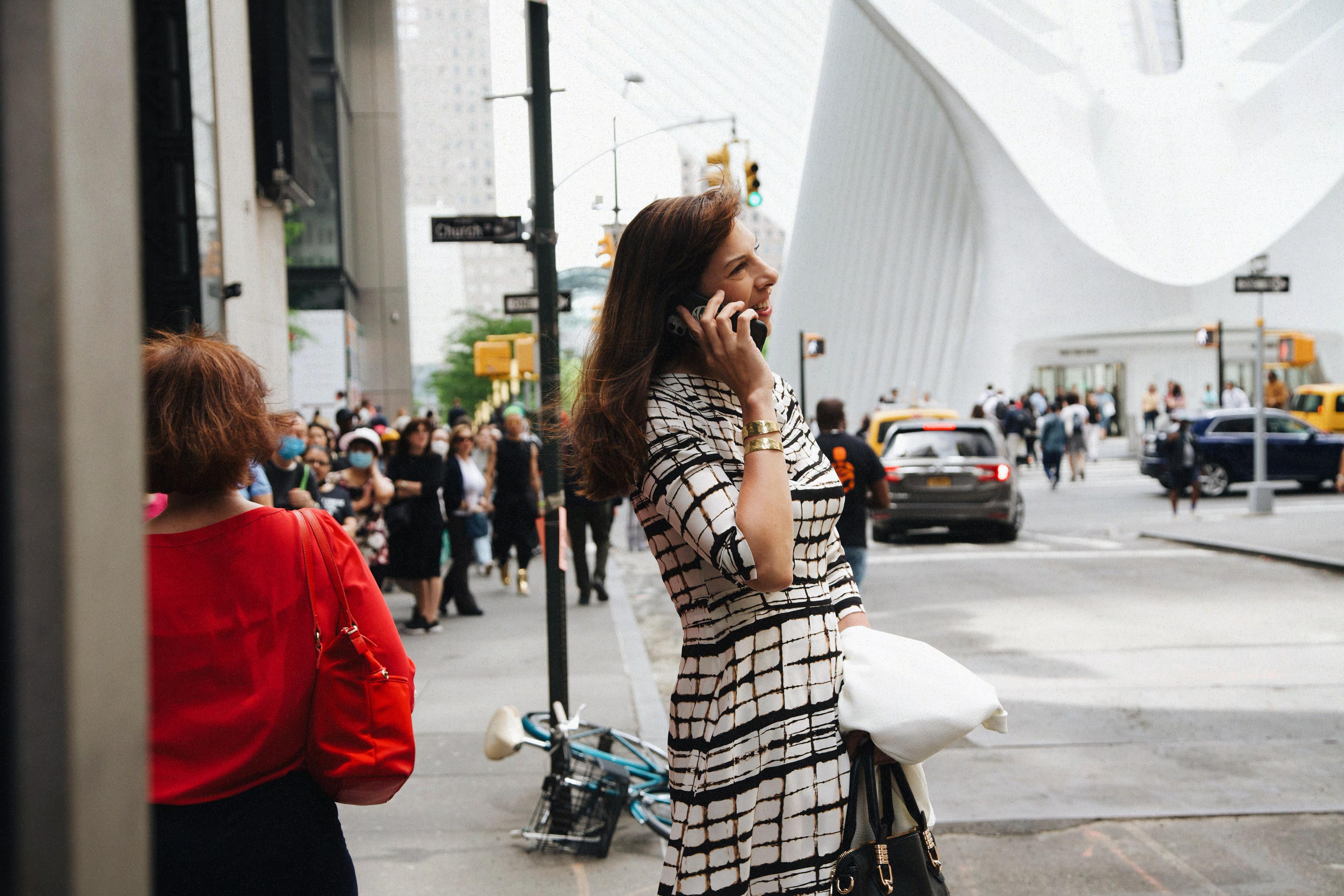
By Eva Sergeeva for Commonplace
Are there any programs or partnerships specifically targeted toward emerging developers?
Yes, this Fall we are planning to launch EDC’s Emerging Developer Loan Fund 2.0 (EDLF). This is our second fund, the first has been invested and substantially returned. Our first step is an RFP to identify a fund administrator that will work with us to capitalize the fund, with EDC dollars and private capital. With EDLF 2.0, emerging developers can apply for pre-development loans to use for EDC, as well as non-EDC, projects. The funds are targeted toward pre-development activities like acquisition, public approvals and transaction documentation. This is some of the hardest capital to access because it’s needed before the real estate opportunity is fully entitled or even fully secured. With these funds, we hope to support diverse entrepreneurs with early stage track records, as well as those with several projects under their belt and looking to scale.
When considering projects, does the EDC mostly redevelop existing assets in its portfolio, or does it seek to develop new buildings?
It varies depending on the need, the vision for the area, and what’s practical. The Sunset Park campuses I mentioned earlier are great examples of adaptive reuses of existing structures. At BAT, we are transforming a decommissioned army base that lay fallow under federal control until it was eventually transferred to the City. Through significant political and community engagement, we are delivering on a business plan that invests City capital to address significant deferred maintenance while incubating emerging sectors and industries. Every day 100 companies and 4,000 people go to work at BAT. It’s a great business community with significant growth potential.
Ground-up new construction is also an important part of our portfolio. For example, at Willets Point, we are partnering with the private sector to deliver 2,500 new affordable housing units, a hotel, and a new 25,000 seat soccer stadium – the first ever 100% privately financed sports venue in NYC. The City is designing and funding the construction of all the infrastructure, including sewers and utilities that will support the future development of the area. If we're going to enable growth, we have to also plan for the future – that includes considering flood plains and increased utilization in the decades ahead. By investing hundreds of millions of dollars into infrastructure, we are seeding the development of a new place that will eventually attract billions in private investment into an area once terribly underutilized and historically overlooked.
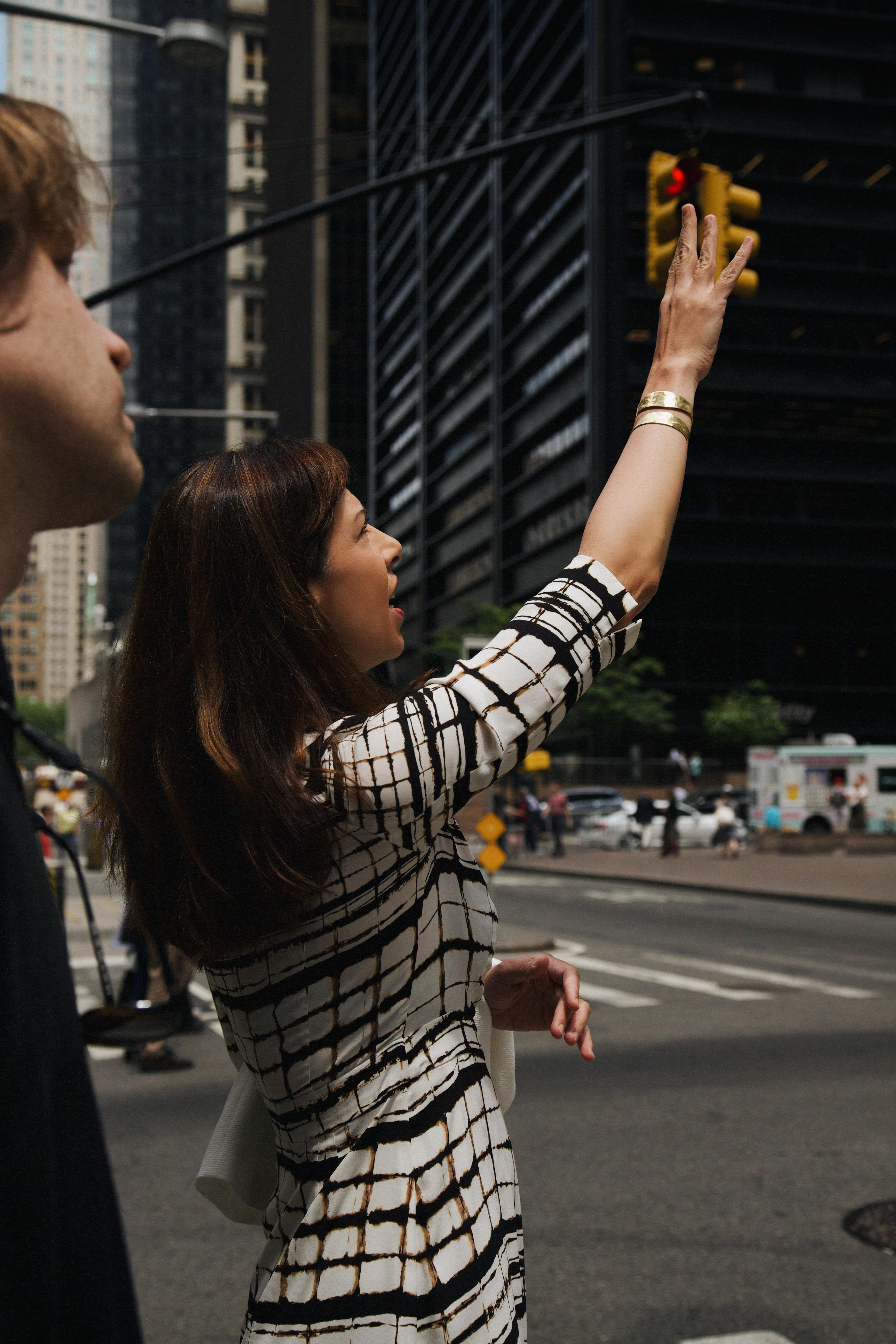
By Eva Sergeeva for Commonplace
Is there anything you are particularly excited to be working on at the NYCEDC?
I’m energized by our new M-CORE incentive program to spur investment into modernizing NYC’s office stock. The Manhattan Commercial Revitalization program (M-CORE) was born out of the “New” New York Action plan released by the Adams and Hochul administrations in December 2022. Along with the leadership of two former Deputy Mayors – Dan Doctoroff and Richard Burrey – the EDC helped convened 59 business, academic, non-profit, and real estate leaders to create the roadmap to strengthen and re-energize our business districts and ensure they remain globally competitive. The “New” New York Action plan identified 40 recommendations. There is no one silver bullet, but rather a tapestry of strategies that when woven together will create vibrant 24/7 districts for living, working, learning, and entertaining.
Economic changes brought on by the pandemic have left New York’s office market as uncertain as at any point in recent memory. There’s no doubt that preferences for hybrid work in the general shifting attitudes towards what needs to be done in an office versus through a technology platform have been some of the most lasting effects of the pandemic. It is also the case that Manhattan’s office stock is aging; in fact, the average age is close to 70 years, and needs to be updated with modern infrastructure, floor plans, amenities, environmental standards, and health and wellness measures. M-CORE will help landlords accomplish this through a discretionary 20-year tax abatement that will dramatically lower the cost of investment for bringing Class B up to Class A.
"There are no precedents to lean on as we navigate tech disruption and the preference for hybrid work. New and diverse ideas, experiences, and relationships will be key to unlocking growth and innovation."
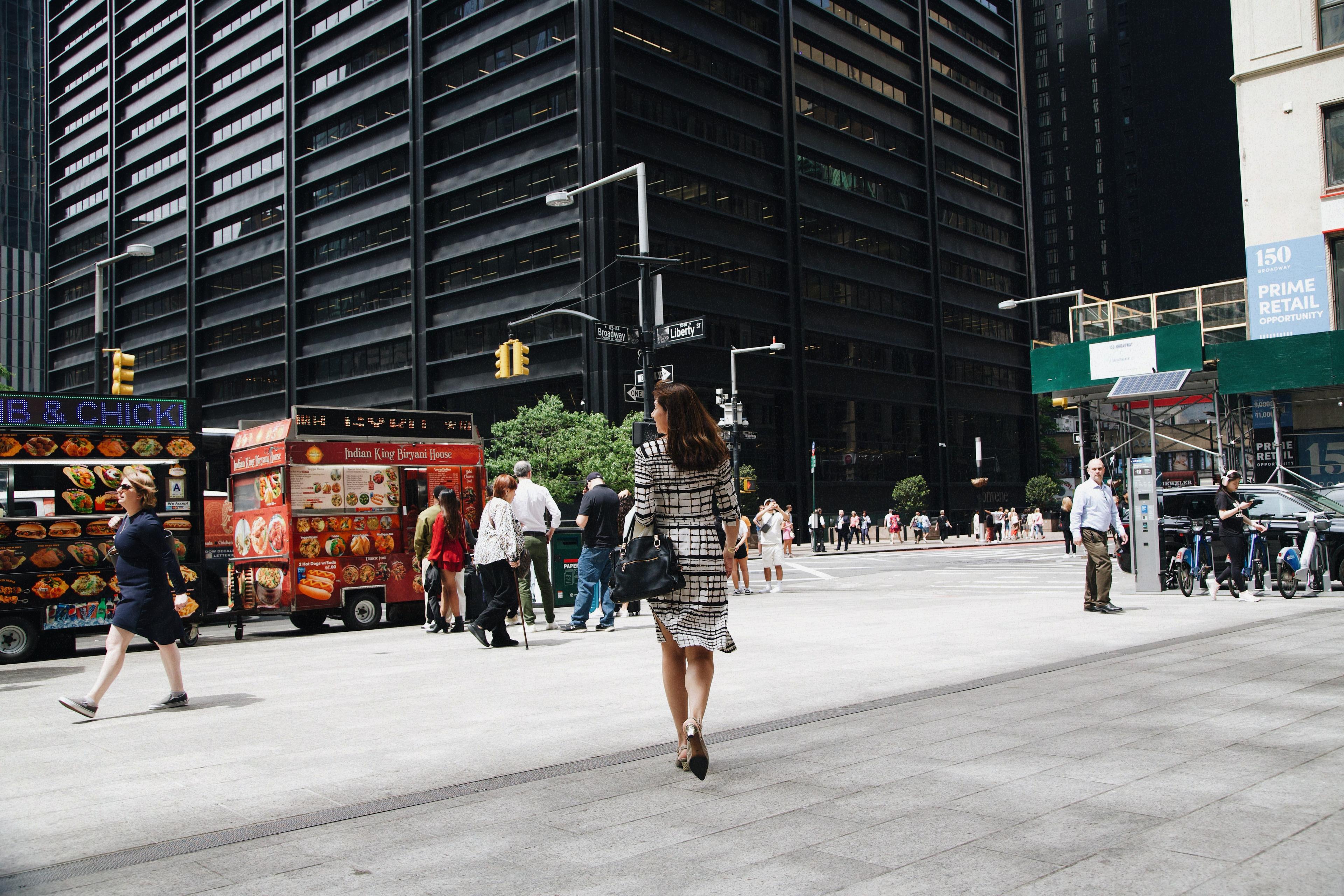
By Eva Sergeeva for Commonplace
What drives and motivates you? What legacy do you hope to leave?
I have clear conviction in NYC, but I am also not complacent about the City. When times are good everything defaults to business as usual, and we rely on proven methods and industry conventions. This though, is not the time we are living in – no one has the playbook on what this next period of recovery and renewal will look like for NYC.
I think about 9/11 and about the Great Recession, as these were times of crisis defined by constructive partnership and productive collaboration between government, real estate, and local communities. In the wake of tragedy, we reimagined the World Trade Center and instead of an urban exodus as some predicted back in 2001, it was quite the opposite – a new residential, cultural and business community was created in Lower Manhattan and flourished. As a city, we reduced our tax revenue dependency on Wall Street by cultivating new industries like Tech, Higher Ed, and Healthcare. We also built new subway lines, created bike lanes and reinvigorated the waterfronts with new parks and housing.
A NY comeback isn’t a passive endeavor; it doesn’t just recover on its own – it needs to be steered back, willed back, invested back, and led back. Our best New York is one where government, business, academia, and communities are valued, trusted, and working in partnership to build an inclusive and prosperous City and grow our economy. This is what motivates me to bring my leadership and experience across real estate, infrastructure, and investment for the benefit of the great NYC.

Melissa Burch
NYC Economic Development Corporation
